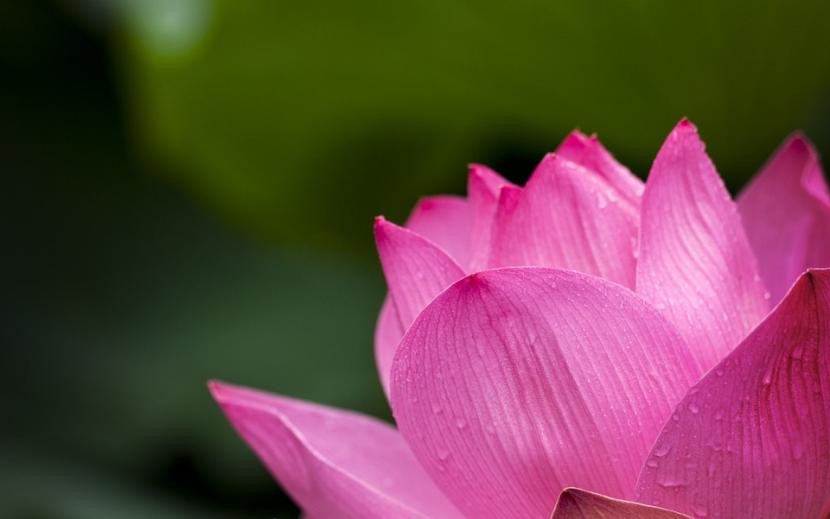
The Lotus Flower is one of the most beautiful plants there is. It could be said that they are the orchids of the swamps, thus alluding to the beauty of the flowers that these plants have that we care with so much care at home.
It is so elegant that it is difficult to find a pond in which it is not growing. Its delicate petals of soft colors, such as pink or white, as well as its sweet aroma make the Lotus Flower one of the most cultivated aquatic flowers.
Characteristics of the Lotus Flower
Our protagonist is an aquatic herbaceous plant known by the other common names of sacred lotus, Indian lotus or rose of the nile. It is of the Nelumbo nucifera species, which belongs to the botanical family Nelumbonaceae. It is native to southern Russia, the Near East, eastern Siberia, China, Japan, Pakistan, Bhutan, Nepal, India, Sri Lanka, Korea, Taiwan, Burma, Thailand, Vietnam, Indonesia, Malaysia, the Philippines, New Guinea, and Australia.
It is characterized by having floating leaves, of a glaucous color, and with a diameter of up to 100cm. These sprout from a rhizome that is buried. The flowers, undoubtedly its main attraction, measure from 16 to 23cm in diameter, with concave petals that adopt an oblong-elliptical shape, and measure 10 x 3,5cm. They sprout in spring and summer.
Once they are pollinated, the fruits begin to ripen, which are formed by an ellipsoidal receptacle of 5 to 10 cm in diameter.
Nelumbo nucifera varieties

The varieties are equal to or even more amazing than the type species (Nelumbo nucifera). The most interesting are the following:
- Nelumbo nucifera »Full Rose»: This incredible plant produces soft pink flowers, with a diameter of up to 30cm and, what is even more amazing: they are double. This means that each flower has twice the number of petals.
- Nelumbo nucifera "Sunrise granfiora": Its delicate flowers are a pure white color that is sure to attract the attention of all eyes 😉.
- Nelumbo nucifera "Sunrise striata": produces large white flowers with crimson rim. They are an interesting 15cm wide.
- Nelumbo nucifera »pekinensis Rubra »: the flowers produced by this variety are carmine pink.
- Nelumbo nucifera »komarovii": These lotus flowers are a very pretty pink color, and are between 15 and 20cm wide.
- Nelumbo nucifera »Mrs. perry d. slocum": They have an intense pink color that could well pass for a reddish pink that will brighten up the room in which it is located, since it also produces double flowers.
What care do you need?
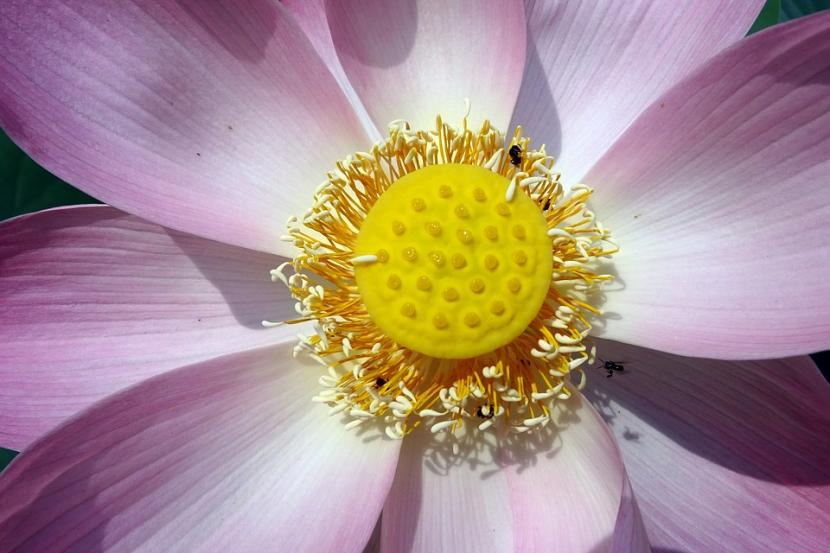
Being able to have a Lotus Flower is wonderful. With it you can decorate the pond or, you can even have it in a bucket turned into a pot on the patio or terrace. However, to make it look pretty throughout the year it will need a series of care, which are:
Location
It must be located in an area where it is directly exposed to sunlight, ideally throughout the day, but you can adapt without problems if you give it only 6h / day.
Substratum
The substrate must have good drainage, but at the same time allow the roots to take root well inside the pot, so it is advisable to mix garden soil, universal growing medium and river sand in equal parts.
Pruning
To avoid the proliferation of diseases, you can go removing the dry leaves and the withered flowers. This way it will also look much prettier.
Planting time
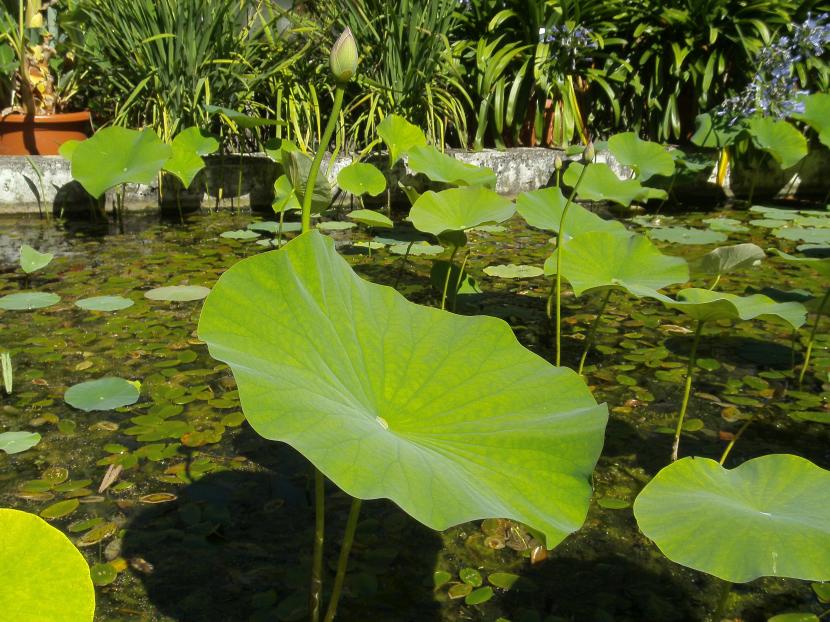
Whether you want to have it in a pond or in a container with water, you can move it to its final location in spring. If you don't know how to do it, don't worry. Follow this step by step:
- The first thing you have to do is fill the container or pond with water.
- Now fill it up to a little more than half full with substrate.
- Place a tall, flat stone inside it. This stone must not stand out, since the plant will go over it and it must be sufficiently submerged so that its leaves can remain floating in the water.
- Then put the Lotus Flower in its new location.
- To keep it from moving, put some large rocks around the pot. This will help the roots to take root.
Multiplication
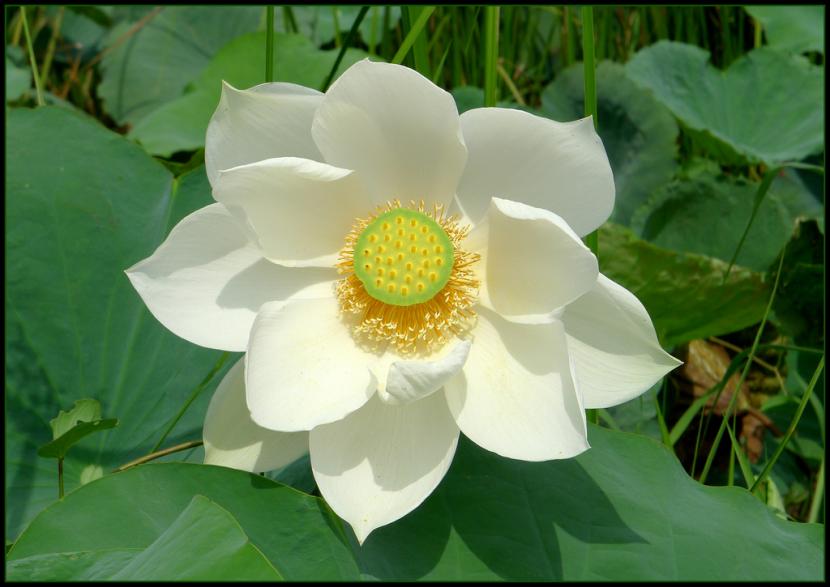
To get new copies of Nelumbo nucifera you must acquire seeds in spring or divide the rhizome in autumn. Let's see how to proceed in each case:
Seeds
As soon as you have them at home, you have to scarify them, that is, pass them with sandpaper until they change color, and then immerse them in a glass of water.
The next day you will see how they have begun to swell, and in that same week the roots will come out, and very shortly after the first leaves will sprout. Newly germinated seedlings will grow very fastSince the seed provides them with all the nutrients they will need in the next 30 days.
Still, it is important that you plant them in a pot as soon as possible. Use as such a pot that is large, 20-25cm in diameter and 60cm deep at least filled with universal growing medium. Next, place the seed in the center and cover it with a little substrate.
Then, put the pot in a container that you have added a little water to (just so that the substrate is permanently soaked), and leave it there until the leaves sprout, which it will do after about a month. .
After that time, it will be time to re-locate the Lotus Flower, placing it in the pond leaving it 15 centimeters below the surface of the water.
Rhizomes
The division of rhizomes will allow you to have new specimens without spending any money, or almost effort. To do this, you will need:
- A small hoe (you can use a handheld one).
- Saw knife previously disinfected with pharmacy alcohol.
You got it? Now go on to divide the rhizome:
- The first thing you have to do is extract the rhizome from the pot.
- Next, remove the dirt that has adhered to it.
- Then, with a knife, cut the rhizome into pieces, making sure that each one is at least 5 centimeters long.
- Then, put healing paste on both sides to prevent fungi and other microorganisms from affecting them.
- Finally, plant them in individual pots with universal growing medium mixed with 30% perlite, and put them in a container with water until they have produced leaves. When they do, you can move them to their final location.
Council: to increase the chances of success, you can add some very special rooting hormones to the water: those obtained from lentils. On this article We explain how they are obtained.
Plagues and diseases
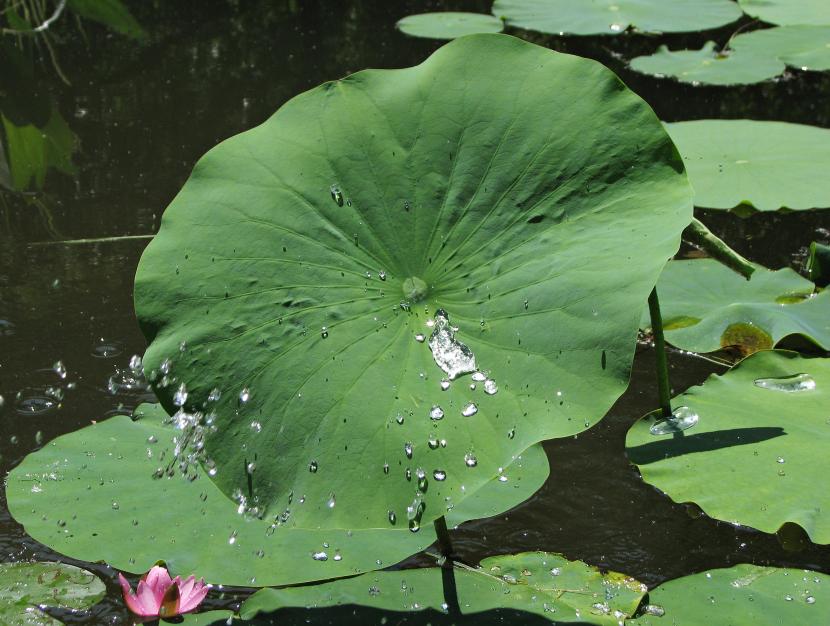
Our protagonist is a perennial aquatic plant that is very resistant to pests and diseases. In fact, the only microorganism that it could have will emerge when it is still a seed, and that is the fungus.
If the seed is not genetically strong, or if it has not been kept in the right place, fungi can attack it, causing it to lose its viability. Therefore, to avoid it it is always better to give it a bath with insecticide before sowing it. This way you make sure this fungus tenant can't do anything to you.
Other problems
There are some -very few- problems that the Lotus Flower can have, and they are:
- The seeds do not germinate: if after a day you see that they do not swell, it is most likely that they have not developed well and, therefore, that they are not viable.
In this case, you can add them to the compost pile, or directly to the garden soil. As they decompose, they will contribute nutrients to the soil. - Leaves turn yellow and / or brown quickly: It can be the natural development process of the plant, but if this starts to happen during the winter, it will mean that it is getting cold.
To prevent it from going overboard, you must protect it by covering the pond with a thermal blanket, or if the winter is very hard, remove the pot from it, cut the leaves, clean the rhizome and keep it in a pot with peat previously moistened with water. . Place it near a heat source so you don't notice the low temperatures too much.
Add half a tablespoon of Nitrofoska to it so that it can better withstand the weather conditions. - Leaves are torn / bitten: if you have fish in the pond, they almost certainly wanted to taste the flavor of its leaves 🙂.
If this happens to you, you will have to find out what plants the species of animals you have eat, and try to protect your Lotus Flower by wrapping it, for example, with metallic cloth.
Rusticity
You can grow it outside if the temperature does not drop below -2ºC during the winter.. If you live in an area where it is colder, you can protect the pond by covering it with a thermal gardening blanket or transparent greenhouse plastic.
For what do you use it?
The Lotus Flower is a plant that has several uses. In the West we only know use, and it is that of an ornamental plant. And it is that, it is so beautiful in the garden ... But in their place of origin both the rhizome and the seeds are eaten roasted or cooked, it is even used in popular medicine.
In India and China, just as it was in Ancient Egypt, it is considered a sacred flower.
Properties of the Lotus Flower
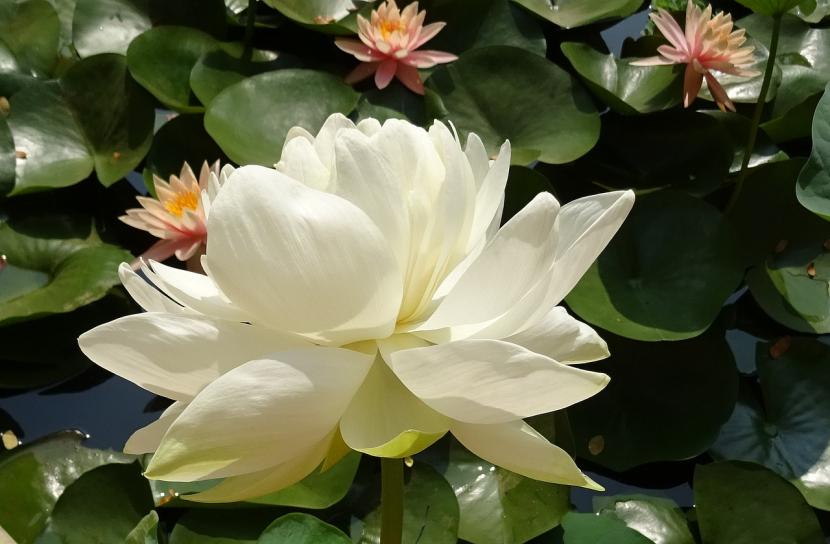
This wonderful plant It is astringent, diuretic, emollient, antifungal, antimicrobial, antipyretic, antibacterial, antiviral, and anti-helmetic. It can also be used to prevent cancer or to help you lose weight. But not only that, but it can become an ally for those who have difficulty having children.
Although there are still more things you should know. In fact, thanks to this plant you can show off your hair and skin like never before. On the one hand, it will increase the volume and natural shine of the hair; and on the other, it will increase the elasticity of the skin while preventing dark spots and wrinkles.
And if you have a tendency to have stress and / or anxiety, the oil extracted from its flowers will be very useful to counteract them and be able to lead a calmer life.
How can I take advantage of it?
If you want to enjoy the many benefits of the Lotus Flower, you can do several things:
- Extract the rhizome and clean it with water and then eat it raw.
- Use its flowers to prepare delicious soups.
- Soak the seeds and eat them as if they were a snack.
- Desiccate the root and make a tisane to be consumed later alone or mixed with other herbs, such as green tea.
- Get a bottle of its essential oil to be more relaxed / and take better advantage of the day to day. You can also buy incense or candles.
What is the meaning of the Lotus Flower?
These precious flowers due to their beauty and when emerging from the depths have been symbolic in ancient Egyptian civilization and in Asia
Ancient Egypt
The ancient Egyptians considered these flowers as the symbol of the resurrection. For them, seeing them emerge from "nothing" and, having such beautiful and cheerful colors, was the proof they need to know that, after death, they too would "re-emerge."
Asia
In Asia it has the same meaning in Egypt. There the lotus is called padma in Sanskrit, yeIt is one of the plants that we will always see drawn in Buddhist representations and sculpted in figures and temples of that religion.. Moreover, they have a ritual prayer that little by little we are getting to know here in the Old Continent and in America: om hands padme hum (Om jewel in the lotus hum!).
The lotus for Asians is the purification of the spirit, and not only that, but it allows the person to ward off negative thoughts that they may have.. Something that is good to know if we are not having a good time.
Depending on the color of the flower, it has different meanings. For example: the color pink represents divine characters, the white one for purity, the red one for compassion and the blue one for wisdom.
Where to buy?
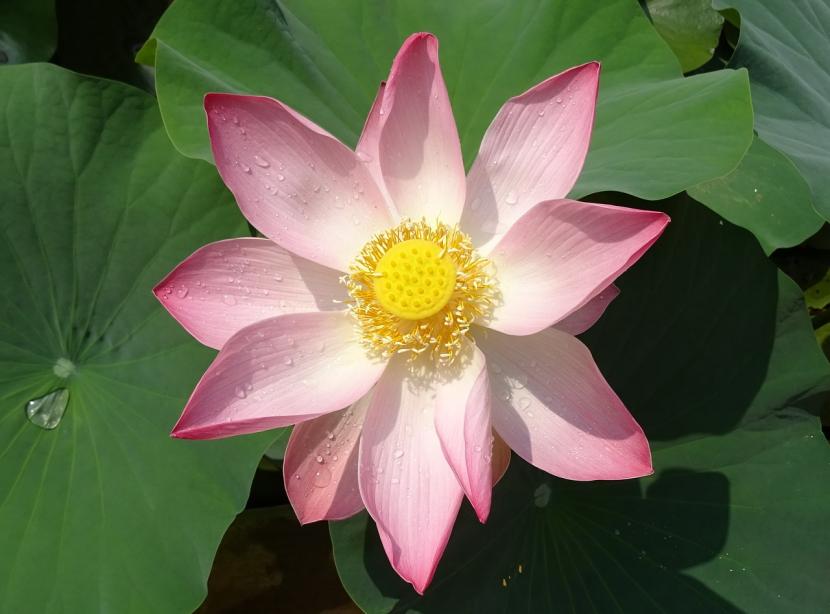
Plant
You can get it in nurseries and garden stores. They are sold either in pots or in plastic cups with a couple of leaves, ready to be put into the pond or transferred to a bucket with soil.
The price will vary depending on the cultivar and its size, but you can usually buy it for 10 euros.
Seeds
The seeds I can tell you that I have only seen them for sale in online stores. In nurseries and physical stores I have never found them. The price is 1 euro for 10 units.
Curiosities about the Lotus Flower
To give the final touch to this special, we are going to talk about the curiosities of this beautiful flower. A flower that has been considered sacred for more than 5000 years.
- Its fruit has been used in China for more than 300 years: has curative purposes.
- Its flowers open early in the morning, and close at night: Like this for 3-4 days. As one flower fades, another develops.
- The flowering season is very long: lasts all spring and all summer. Furthermore, it can flower - albeit more sparsely - during the fall if it is in an area where the climate is mild (that is, if there are no frosts or they are very weak, short-lived and scarce).
- The sweet aroma of its petals attract numerous pollinating insects: bees, small birds, wasps, dragonflies ... If you want to have a pond full of life, having a lotus plant is one of your best options, since it is very possible that these animals will later pollinate the flowers of your other plants , which can come in handy if you have a vegetable garden 😉.
- Your viability period can be very long: What's more, seeds have been found that have germinated after ten centuries. You do not believe me? Click here.
- Help you relaxAlthough we have already mentioned that its essential oil is an effective remedy for stress, just observing it every day will help you disconnect. Just watch it. Pay attention to each of its petals, the shape and color of its flowers, the location where you have placed it, ... Little by little, but before you know it, you will have managed to set your sights on it. By doing it for a little bit each day, I guarantee that you will see how your day to day improves radically. Well, there is nothing like being in the garden, near an ancient flower, so that all evils disappear.
What more can you ask a plant? It's pretty, easy to care for, doesn't need a lot of space, and it's perfect for calming your nerves. What are you waiting to get one?
Hello
Thank you very much for such a useful article. I have a question. I am from Chile where in the
Winter is very cold and algae has grown on the lotus plant, is this normal? I have it on an outdoor balcony in a plastic planter. It only has water and a stone at the bottom that holds its roots. In the summer it bloomed much more now that it is winter with frosts, it no longer has leaves, only shoots near the root, it seems to me that it sleeps
Thanks for the guidance you can give me
Cesar Riveros O. Chile
Hi Cesar.
Yes it's normal. The algae come out in any container with water even when the temperature is low.
Anyway, in winter you can remove the rhizome and clean it and the pot.
A greeting.
Hello, I have a lotus flower and today my question has opened to me is when the season passes do I have to cut the leaves so that it comes out again? Please help
Hello Francisco.
No, it is not necessary. The next season will produce flowers again 🙂
A greeting.
Greetings How do I get a flower in Venezuela it is warm where I live
Hi Emelyn.
The Lotus Flower can be found for sale in any nursery or garden center.
Living in Venezuela you can have it very beautiful all year round 🙂, either in a pond or in a large pot (about 40cm in diameter).
A greeting.
Thanks Mónica Sánchez so the green leaves fall alone and everything is true, I don't have to do anything, just leave her in the place that is calm, greetings
Indeed, Francisco 🙂
A greeting.
Hola!
They have given me some lotus flowers, I live in Veracruz Mexico and the climate is warm.
I see that they can be put in pots, my question is if it can be in soil or only in water?
Thanks in advance.
Hi Zoraida.
You have to put a lot of soil, but it must always be flooded 🙂
A greeting.
Hello, I live in Santiago de Chile, several years ago, I calculate about five, we have a pool with fish, carancios and cois. We also have several aquatic plants and among these, lotus flowers, which have never bloomed. I want to know what could be the problem.
Thank you very much
Hello Francisca.
They may not have much room to develop well. When there are many plants growing in a small space, they end up struggling to get nutrients and do not spend energy to flourish, because they do not have it at that time. How big is the pool?
A greeting.
Good afternoon. I have just planted three lotus flower seeds in two pots and have placed them with sun exposure. But very quickly the water has stagnated and the leaves have dried up. I add water without chlorine to keep them with a good amount. Is this normal? How can it be solved? Thanks
Hello Rodrigo.
Yes, they were surely sunburned. I recommend keeping them in semi-shadow and gradually exposing them to the star king to prevent it from happening again.
A greeting.
Monica, thanks for answering. Summer finally arrived plus my lotus flower that is in a container with common water and a stone to hold the roots. It has given leaves but they are filled with algae. Y
What can I do to make it bloom again?
Hi Cesar.
I recommend you take it out of the container momentarily and clean it well. Change the water.
To prevent algae from coming back, you can take an aspirin from time to time.
By doing this, it should soon bloom.
A greeting.
Greetings.
I live in the State of Mexico, how viable is it to adapt a Lotus to the climate of the State of Mexico? Someone has been given this plant.
Hello Franco.
You can plant it without problems. Do not worry.
A greeting.
Hi there! I have a question ... do you necessarily need land? It cannot come out being alone in water? I mean… once it has germinated, can I always leave it in water? without soil? or the flower is not maintained or does not come out ...
Thank you
Hello Ana.
Yes, the roots need soil or garden sand to fix the plant.
A greeting.
Hello, I have many questions, is there a way to contact you more directly
I love I did not know all this information.
Hi Monica, what happens is that I am going to buy some seeds the other week I think, and I would like to have one of those on the desk in my office and the other in my apartment but the truth is that it is a bit difficult for me to follow the instructions well since I do not I have a lot of knowledge. Some way in which you can help me, I don't know if I can contact you by whatsapp.
Hi Julieth.
This plant needs to be outside, in full sun. Does not live well indoors.
The article explains how the seeds are sown. If you have doubts, you can ask us here or by Facebook.
A greeting.
The lotus flower can be indoors?
Hey.
No, it is not well suited to being indoors.
A greeting.
I live in Canada and of course there is snow in winter, I bought lotus seeds online and they already have sprouts, now I have them in water in a window, and in spring I take them outside but how do I do in winter if I can't take them inside? I can cover but here in winter there are temperatures down to -40 degrees, any ideas that can help me ?, thanks.
Hi Anabella.
I think you are the first person to write to us from Canada 🙂
I answer your question: so that the plant does not suffer damage, I recommend you remove it from where you have it, and put it in small containers (without a lid) with water. I imagine that although they already have sprouts, they will still be small.
And still, when they do grow, you can remove the leaves and dip the rhizome (the stem where the leaves come from) in water until spring.
A greeting.
Hi! I bought an already large lotus flower from a nursery a week ago. I see you have some small snails and lice-like insects. What should I do?
I also see that some of its flowers came already developed but they do not open, they turn brown and are damaged.
Thank you!
Hello Ana.
I recommend taking them off, just in case. Snails, regardless of their size, are animals that can do a lot of damage to plants (they eat the leaves and all the tender shoots; I even ate a few cacti even though they have thorns).
Regarding those insects that look like lice, can they be aphids? If so, it is also better to remove them. Since it is an aquatic plant, it is most effective to clean the leaves with water and a cloth. If it is in a pot or does not have the leaves submerged, you can add diatomaceous earth (they sell it here for instance). This is a natural product, which what it does is pierce the body of insects, causing them to die of dehydration. It is totally harmless to plants; in fact, it is used as a natural compost.
If you have doubts, tell us. Greetings!
The lotus flower, as you have mentioned, has a very deep meaning in terms of your symbolism, thus being very important in Buddhism and is thus also used in meditation and yoga.